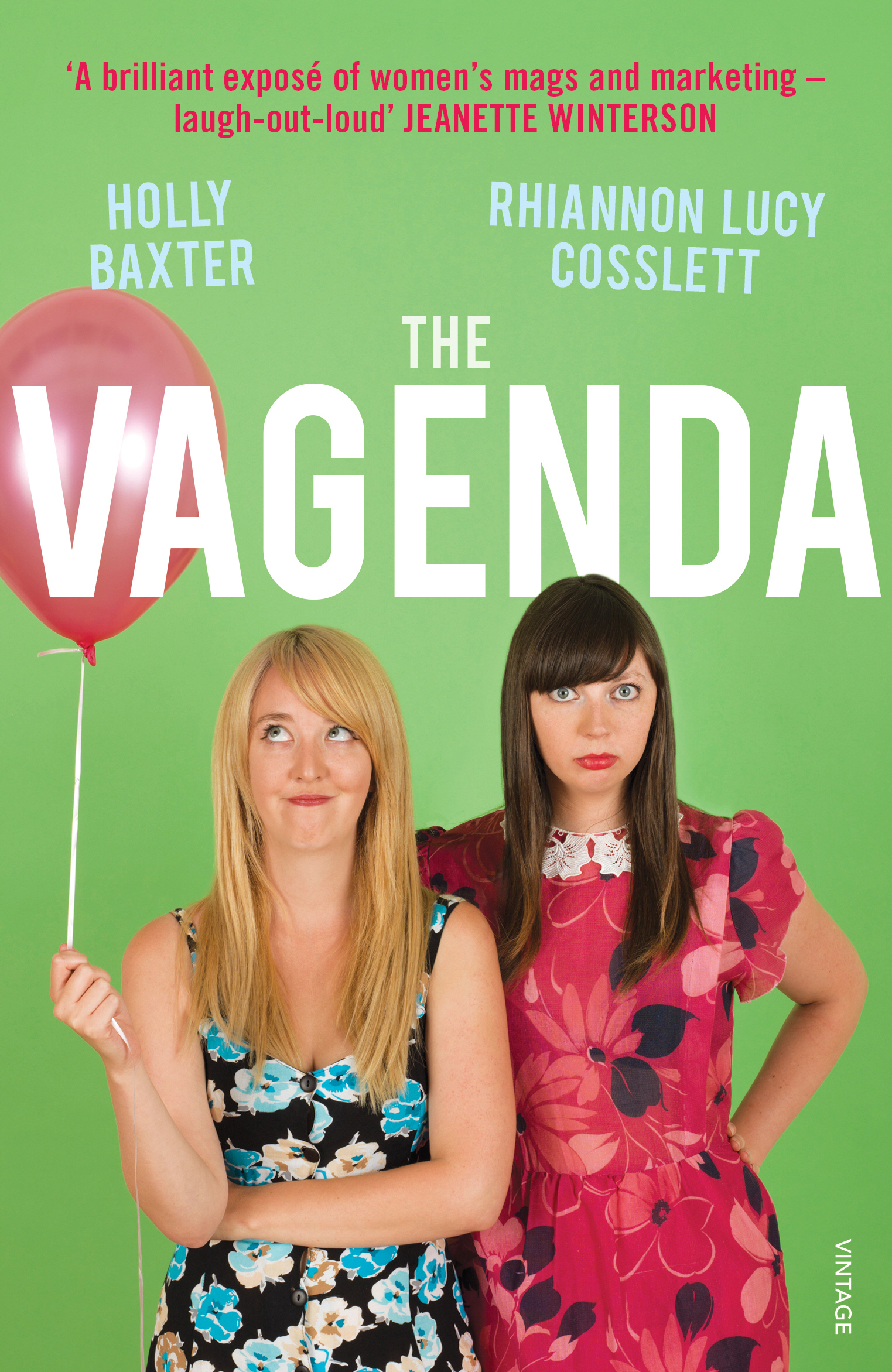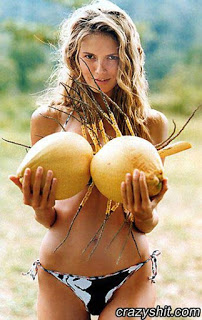I may as well tell it to you straight: I am not the type who sits around fondling my breasts during quiet moments in Homeland. They were never big enough to look good in low-cut tops or to balance out my wide hips, never mind to balance a formation of beer cans on for comedic effect. Motorboats for me would be more akin to motor-dinghies, which hasn’t actually proven a devastating loss. And yes, they are different sizes.
That ever-confusing term ‘normal’ is bandied around in reference to it, but it’s a truth universally acknowledged that the majority of pairs of breasts are non-symmetrical – and the majority of pairs that are, are fake. From a small difference to a multiple-cup-size discrepancy, uneven breasts are a fact of life. Both sides of our faces aren’t even symmetrical, so why should our boobies be?
Naturally, Googling ‘uneven breast sizes’ returns as its fifth result a delightful hit from that paean of security the Daily Mail, that states that having uneven breast sizes increases the chance of cancer. This seems rather like saying ‘difficulty breathing after short periods of exertion could cause asthma’, i.e. a case of putting the chicken before the two fried eggs. If your breasts are odd sizes, there’s every chance that they are just that way because Mother Nature has dealt you a more interesting hand, and the doctor quoted in said article stated that less than 1% of women surveyed had what can be described as ‘perfect’ breasts (a concept as frustratingly unclassifiable as ‘normal’, but thanks for that, doc.) Of course, while advising all readers that they take her words with a pinch of salt, the same doctor puts her name to an article stating that for every 100ml difference between breasts, the chance of developing cancer increases by 50%. Go figure.
You read horror stories about finding bits in your tits. While men get euphemism-filled ads with Holly Willoughby teaching them how to check for lumps, making all sexy and ‘important’ something they seem to do most of the time and pretty publicly anyway, women have two options: the scary-looking diagrams with phrases like ‘the size of a pea’, or a vaguely light-hearted Sex and the City plotline. Maybe if we had one of the fitter members of One Direction suggestively cupping some melons while assuring teenage girls there’s no need to worry, or Christian Bale telling us with those sincere eyes that he cares about our cancer rates, we’d all be more blasé about it, although to be fair campaigns such as CoppaFeel are slowly starting to change the way we think. As it is, the whole social perception of breast cancer being something to be either terrified of or something to punch the air about in a pink t-shirt at a Race For Life event has made the whole thing seem very alien. In the words of Samantha Jones, let us talk about what we’re afraid of – and then, perhaps, problems in the mid-region will become something we can approach calmly, rationally and filled with knowledge, like a job interview or applying for a mortgage. A personal MOT, if you will.
So I’ll do that. I had a lump in my breast.
I was 17, and had been vaguely aware of a large, flat lump in one breast for several years. I had previously attributed it to a particularly vicious serve from a tennis coach in my early teens, or a kick from a swimmer I got too close to in the medium speed lane. I can’t remember why on that particular day I stopped looking at the lump as an amusing party trick, where I’d bend forward, squeeze my arms together and watch the strange movement of the skin, and started looking at it as something that wasn’t meant to be there. And my mother, and a GP, agreed.
After the appointment where I bit the bullet and bared my twins, at which the GP had repeated to me the words ‘cyst’ and ‘test’ in terrifying proximity, my mum sat me down on the wall outside the surgery and told me not to worry. That she was sure it was nothing. Through rounds of tests, from the nastiest bit of the diagnosis – where, in order to determine what type of lump it was and thus how to remove it, they had to take a tissue sample, which essentially involved firing a needle gun (with the needle still attached) into my left boob to pull out a sample of the tissue – at no point did I panic, or ever think it was something. The inevitable operation to remove the lump terrified me only because of the idea of general anaesthetic: the removal of awareness and control, and the knowledge that I would probably look hideous in slack-jawed, medically enforced unconsciousness. I awoke several hours later in a strange upright chair, and the requirement to lie still, take lots of painkillers and not shower was at odds with everything I’d known before, as a fiercely independent young girl with an aversion to sick days. I felt like a patient, an invalid, a specimen.
But even considering that I’d felt fairly chilled about random men taking an interest in my only-recently-sprouted teenage breasts, and then the old man fiddling with a lump in them slightly tainted it by saying, ‘It’ll heal up fine’ and patting my shoulder, I bore it all with the kind of inquisitive acceptance that examining an outside relic would promote. An interest in the natural biology of me, and a fascination with the things that were messing with it, that were unusual about it, seemed to stave off any serious anxiety. In a strange way, once the lump was gone I missed it, just like I miss the mole I had removed from my pale Celtic ankle a few months ago that showed pre-cancerous indications (any rogue stroke of sunlight on a natural redhead is worth worrying about, so we had to go our separate ways.)
It was benign, as the majority of these things are. A very large, unsightly, rare and entirely benign growth (called a hamartoma in case you are interested) that the surgeon said was one of only eight he’d seen in his career. I wore that like a badge of honour as the unsightly mess that was now my left breast slowly healed; the scar flattened out as the flesh underneath slowly filled in the hole, and the angry line began to fade from purple to red to pink to white, like a stretchmark. The requirement not to shower as the wound healed stretched to weeks – and typically, I’d just got a boyfriend, which was the perfect time to both knacker my tits and begin to smell. Every time he visited me, my mother would wash my hair over the sink as I doused myself in perfume – and to his credit, he never mentioned a thing. When he asked what my operation had been for, I just shrugged it off with ‘girl stuff’.
When we are older, and hit the ages at which we are more likely to develop these sorts of things in a more scary way, the narrative is available for us to handle it like adults. Like a boardgame with a rule card, we start to become aware of how to navigate these possible hurdles. Our adult brains come to know these things, like I knew to routinely book a smear test for when I turned 25. And I’m aware of the procedures following up that smear test, whatever the outcome. The pathways are visible, even if sometimes murky.
Finding a lump in my breast as a young girl, however, was a completely alienating experience. I never read about what to do in that instance in Mizz magazine, and nobody in sex ed considered that someone who still essentially a child might be developing what I had alongside those other great markers that make puberty so fun. At uni, I lamented ovarian cysts with my housemates, and discuss contraception, sex and everything in between with my friends now (with an increasing openness that is largely thanks to Girls). While my lump was benign, and though I viewed it less as a malicious presence and more as a unique trait, even as it grew in my body, the adult part of my brain eventually kicked in and knew it had to go. But I waited the time that I did because I was ill-equipped to deal as a younger kid, while the media hung back on mentioning breasts to children. Were they afraid that the mere mention might suddenly sexualise us all?
I do wonder what would have happened if I had never raised it with my mum that one day when I was 17. Whether it’d still be there, or whether I’d have decided that it wasn’t normal on my own and done something about it. As the abstract-seeming awareness campaigns passed me by, the tween with the cyst was crying out for someone to properly and unashamedly address the breasts, and to talk openly about what happened if you found a lump yourself. In other words, J-17 could have done more.
So for once and for all, chicas, let’s talk about what we’re afraid of – and not just amongst our immediate peers. All adventurous women do.
-JB


